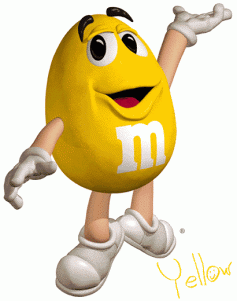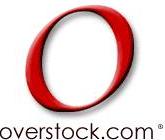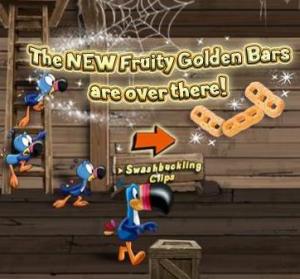Click-to-engage video
Much like the newspaper, traditional television spots are dying. Thanks to continued technological advancement, brands are engaging consumers through interactive web videos that can be clicked through to get more information, play games and download coupons. Not only are users excited to test the video’s abilities, but they are spending more time with the brand. This platform is perfect for YouTubevideo campaigns, and has tremendous opportunity in viral marketing. Some brands are using it to complement commercials, like Blendtec’s “Will it blend?” interactive YouTube campaign.
Filed under: brand | Leave a Comment
Tags: Blendtec, brand, commercials, interactive, web video, YouTube
Are you between 18-24 years old? Help me assess youth attitudes about the American Red Cross and blood donation. Take a quick survey at http://www.surveymonkey.com/s/YCX2XTR
Filed under: Uncategorized | Leave a Comment
Search and destroy
Search engines are not only making money by placing paying brands and businesses at the top of the lists as “sponsored links,” some are deceiving users. When it comes to paid placement, companies appearing highlighted or within the top three on the results list is likely to be there thanks to a large search engine optimization (SEO) budget.
 Google and Yahoo aside, many search engine providers are causing this marketing practice to appear teetering on an ethical balance beam. The only thing keeping them from falling off is open and honest transparency in paid placement links that are clearly marked to make consumers well aware they are clicking on paid advertisements and not necessarily the best or intended match for their search.
Google and Yahoo aside, many search engine providers are causing this marketing practice to appear teetering on an ethical balance beam. The only thing keeping them from falling off is open and honest transparency in paid placement links that are clearly marked to make consumers well aware they are clicking on paid advertisements and not necessarily the best or intended match for their search.
The whole idea of search engine marketing (SEM) is really very ingenious. Calling paying brands “sponsored links” is clever; they’re more like “featured sites,” and paid placement seems to have many benefits beyond traditional advertising.
According to the Search Engine Marketing Professional Organization’s annual survey, marketers are beginning to make the shift from print advertising in newspapers, magazines and direct mail to search engine marketing (SEM) mainly because of its efficiency, opportunity to lessen risk and easy-to-track ROI.
But when will marketers cross the line into unethical SEM? To me, excluding disclaimers or not distinguishing sponsored links borderlines an act of deception. Today’s marketing professionals are making it harder and harder for consumers to recognize real journalism from paid advertising and many are feeling betrayed be companies.
IMC professionals must be sure to consider the relationships they’ve worked to build or are trying create more so than the bottom line when it comes to SEM. Be transparent, tell the truth and do not harm!
Filed under: Web 2.0 | Leave a Comment
Tags: brand, Google, IMC, paid placement, search engine marketing, search engine optimization, SEM, SEO, transparency, Yahoo
Mmm, peanutty packaging
 Standing in the grocery store checkout, I was conveniently close to a large display of candy coated products. There was no doubt that these tasty treats were strategically placed in reach of my impulse shopper mindset, but which do I choose? Upon first glance, the lucky winner that caught my eye was M&M’s Peanuts.
Standing in the grocery store checkout, I was conveniently close to a large display of candy coated products. There was no doubt that these tasty treats were strategically placed in reach of my impulse shopper mindset, but which do I choose? Upon first glance, the lucky winner that caught my eye was M&M’s Peanuts.
Why? The bright yellow packaging and the contrasting dark brown, extra-large M&M’s logo practically flew off the shelf and in my hands. Not to mention the oversized distribution display box , which housed the individual yellow bags and spanned a width twice the size of all the other brands on the shelves. Aside from package design, this product conveniently took its position three rows from the top and was dead center.
The most creative elements that make this package design effective are logo text and color choice. M&M’s, the brand text, is simple and short, making it easily seen, recognizable and prominently featured on its packaging. Often an increase in ad size devoted to text further increases its perceptual salience and attentional demand, which is likely to detract attention from competitors. The color yellow makes products appear bigger, evokes a positive response, and is cheerful and easygoing, much like the brands spokes-character, Yellow, who is integrated in all the promotions of the brand.
Even Yellow has a profile page on the M&M’s Web site and his motto- inside everyone there’s a little nut- plays off the product itself and the brand’s personality. Yellow likes pretty ladies, fluffy things, is plump, yellow and all smiles, and sees the good in everything. It’s amazing how package design can create such a recognizable and engaging brand personality and identity.
Filed under: brand, Web 2.0 | 1 Comment
Tags: brand identity, brand personality, display, distribution, M&M's, package design, peanuts, spokes-character, text, Yellow
Skittles: Interweb the Rainbow
 Recently, Mars-owned Skittles performed an all out social media blitz with the introduction of the latest Web 2.0 tool- a small navigation box that guides consumers through user-generated content on sites, like Facebook, Twitter, YouTube, Flickr, and Wikipedia.
Recently, Mars-owned Skittles performed an all out social media blitz with the introduction of the latest Web 2.0 tool- a small navigation box that guides consumers through user-generated content on sites, like Facebook, Twitter, YouTube, Flickr, and Wikipedia.
The brand’s out-of-the-box, fantasy meets reality personality would no doubt be the one to push the envelope in social media channels. This innovative twist has many, including me, astonished, bewildered and impressed with Mar’s bold move. They’ve given up control of the Web site’s content, but in doing so have cut costs immensely and generated world-wide buzz that’s encouraging consumers to engage the brand.
Some professional have criticized this crazy move, but in all honesty Skittles has done it right by leveraging their most loyal audience, and who better to talk about the Skittles brand then those who love it the most.
Upon visiting the Skittles Web site, humorous text directs users to a disclaimer that asks for their age, saying “Hold your horses. Before you can check out Skittles.com, you’ve gotta tell us your age…Just a heads up: Any stuff beyond the Skittles.com page is actually another site and not in our control. This panel may be hovering over the page, but Skittles isn’t responsible for what other people post and say on these sites.”
Apparently, children under 12 are not to enter the site, so I wonder how this has affected the candy’s younger audience, and if Mar’s has seen an increase in brand awareness from the older folks?
Filed under: Web 2.0 | Leave a Comment
Tags: Facebook, Flickr, Mar's brand, Skittles, social media, Twitter, Web 2.0, Wikipedia, YouTube
Don’t underestimate Overstock
 Forget crowed malls, limited product selections and hard to find bargain basements. Online e-commerce is sweeping traditional retail stores under the desk and driving consumers online where closeout prices are at their fingertips.
Forget crowed malls, limited product selections and hard to find bargain basements. Online e-commerce is sweeping traditional retail stores under the desk and driving consumers online where closeout prices are at their fingertips.
Launched as a premier online company that liquidates excess inventory through the Internet, Overstock is a virtual store that brings the outlet mall to the consumer by providing the same brand-name products sold in land-owned retail stores at discounted prices.
Upon it’s founding in 1999, the Web-based company’s highly-fragmented, liquidation-style business would have struggled to compete offline, but Overstock’s must sought after retail space online has made it a market leader, creating interactivity, providing quality e-service and building a considerable amount of brand equity.
Overstock offers points of parity in convenience, discounted prices and a variety of products. While traditional shoppers walk along retail doors, a large number of consumers who like good quality merchandise, but dislike the crowded mall experiences, find comfort in Overstock. Today, Overstock’s sales have reached $856 million and they offer more than 783,000 products in furniture, at home, bedding, clothing and shoes, jewelry, watches, electronics, books, music, movies, and interactive games. Furthermore, Overstock has saved consumers millions of dollars off manufacturer’s retail prices, and established partnerships with many leading brand-name companies.
One of Overstock’s biggest assets is its URL. Not only does Overstock.com suggest to consumers the company’s purpose- selling excess retail products- but its URL is linked throughout an integrated marketing campaign that has created significant brand awareness and recallability. The company really knows how to create demand off-line through various public relations tactics, like television, print, and radio, and drive consumers online.
Filed under: brand, Web 2.0 | Leave a Comment
Tags: brand, brand equity, e-commerce, Overstock.com, public relations, URL, Website
 ExxonMobil has defined and tweaked their global marketing programs to reach various minority groups with IMC strategies and promotional campaigns tailored to each segmented audience. As a global refining and supply company, ExxonMobil owns refineries in more than 25 countries and supplies petroleum products around the world, so they thrive in concentrating their marketing efforts on regional clusters, and a no-frill kind of mentality. From their corporate Web site users can choose from 40 different countries and regional sub-sites for retail information about the supply company.
ExxonMobil has defined and tweaked their global marketing programs to reach various minority groups with IMC strategies and promotional campaigns tailored to each segmented audience. As a global refining and supply company, ExxonMobil owns refineries in more than 25 countries and supplies petroleum products around the world, so they thrive in concentrating their marketing efforts on regional clusters, and a no-frill kind of mentality. From their corporate Web site users can choose from 40 different countries and regional sub-sites for retail information about the supply company.
The ExxonMobil Fuels Marketing Company has developed a large portfolio of market-specific retail formats for three powerful ExxonMobil brands- Exxon, Mobil and Esso. In 1999, the company it launched a $150 million marketing effort titled “We Are Drivers Too,” that accounted for a wide variety of cultural differences. Management believed this approach would reach their audiences more effectively, while saving them money, and employed six different casts to act out similar storylines and 25 different languages to develop voiceovers. The company produced five hours of commercial footage and made sure the ads had the same look and feel regardless of the 100 or so countries in which they appeared. Marketers even made sure actors ate with their right hands in some shots, because it is customary in some markets.
ExxonMobil understands its products global reach and dependency on these groups to continue to thrive in their industry. The company successfully speaks through their Websites and promotional material to a variety of non-English speaking groups. Catering to minorities, both consumers and employees, is one of the company’s priorities.
Filed under: brand, Web 2.0 | Leave a Comment
Tags: Esso, Exxon, ExxonMobil, minority, Mobil, Website
Beyond lorem ipsum
“Design is about communication, and it takes more than pixels to communicate” – Derek Powazek, veteran website developer and user interface design expert.
Web designers who think writing is not part of their job description are wrong. Text, whether it be attached to a link or a carefully crafted marketing message, is just as important, if not more important than the visual design. When it comes to experience on the web, there’s no better way to create it than to write, and write well. Web designers are more than pixels; they are creators of online experiences.
 Calling all web designers! Learn how to write! Developers may know user interface design and visual creativity, but what they don’t know is that marketing text is interface, too. A company’s marketing message carries as much weight on a Web site as color choice, graphics, design layout and links. Integrated marketing communications professionals understand the value of word choice, and it is time designers do the same. Web sites they develop are primary vehicles for this ever-so important and desirable text and writing it along-side the visual design of online media would ultimately enhance the user’s overall experience..
Calling all web designers! Learn how to write! Developers may know user interface design and visual creativity, but what they don’t know is that marketing text is interface, too. A company’s marketing message carries as much weight on a Web site as color choice, graphics, design layout and links. Integrated marketing communications professionals understand the value of word choice, and it is time designers do the same. Web sites they develop are primary vehicles for this ever-so important and desirable text and writing it along-side the visual design of online media would ultimately enhance the user’s overall experience..
Consider Flickr.com as an example. If it were not for the “encouraging, happy and excited” text and random language, like “Hola! Salut! or Shalom!,” users would not grasp the “fun, friendly” personality the site embodies. Though sharing photos may facilitate some emotions, black text organized on a clean, white background connects with few users unless it inspires a feeling.
Filed under: Web 2.0 | Leave a Comment
Tags: communication, Flickr, lorem ipsum, marketing, pixels, text, Web design, writing
Advergaming advantages
Today’s children have a tremendous ability to find, edit and manage their media experiences, and for many of them, the Internet has become a virtual playground. Advergaming, the use of Web-based games to promote popular brands and products, is reaching children faster than ever, and marketers are excited that players receive continued exposure through branded in-game quests, loading screens, brand-inspired environments, spokes-characters and downloadable content.
 Spokes-characters, like Froot Loops Black Beak and the Trix Rabbit, and animation, such as visual action and sound effects, have proven to increase attention in children with limited reading abilities, and produce relatively high levels of character and product/brand recognition. However, some critics, as well as parents argue that his type of advertising persuades young consumers by bypassing rational capacities, and influencing naive minds in ways that are difficult to resist. Many attribute advergaming to unethically manipulating children’s desires and encouraging confusion of the product with spokes-characters.
Spokes-characters, like Froot Loops Black Beak and the Trix Rabbit, and animation, such as visual action and sound effects, have proven to increase attention in children with limited reading abilities, and produce relatively high levels of character and product/brand recognition. However, some critics, as well as parents argue that his type of advertising persuades young consumers by bypassing rational capacities, and influencing naive minds in ways that are difficult to resist. Many attribute advergaming to unethically manipulating children’s desires and encouraging confusion of the product with spokes-characters.
Check out these popular advergaming brands: Nabisco, Froot Loops, Trix, and Pillsbury.
Filed under: brand, Web 2.0 | 1 Comment
Tags: advergaming, advertising, brand, Froot Loops, games, marketing, Nabisco, Pillsbury, Trix